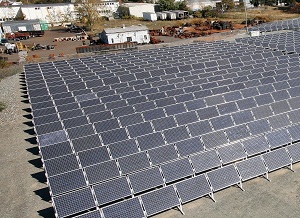New Jersey waiting for tally on viable brown fields for solar
 While the Office of Clean Energy at the Board of Public Utilities considers options to promote solar through long-term SREC contracting, a New Jersey environmentalist is wondering what land is viable for large systems.
While the Office of Clean Energy at the Board of Public Utilities considers options to promote solar through long-term SREC contracting, a New Jersey environmentalist is wondering what land is viable for large systems.
“There’s about 20,000 contaminated sites in New Jersey,” said Jeff Tittle, Director of NJ Sierra Club. “Ten thousand are estimated to be brown fields. Which ones should be built on? This data needs to be sorted out.”
The New Jersey Department of Environmental Protection keeps an official tally on contaminated land. According to Tittle, 500 of the brown fields are especially dirty—prime for solar installations.
“We really need to start thinking about the best places to develop. Poor transmission systems, running lines in sensitive places—the BPU needs to work on a plan that keeps us out of boom or bust,” said Tittle.
Preserving open space in New Jersey has been a common concern in political debates. The Christi Administration and PSE&G back the idea of developing systems on brown fields. If electricity needs to come into the state through a power line, the rate of return for the owner of the line is 13 percent.
Having economies of scale with solar can reduce the cost of electricity for residents and businesses. Distributive generation also reduces brown outs and black outs.
“I think we need to limit and regulate to be successful,” said Tittel.
There’s been a flux of international investors purchasing farmland in the state to turn a quick return on the investment. According to Tittle, the investment in the state is good. He thinks speculators can be kept in check to protect the long-term health of New Jersey’s SREC market.
“In some towns they complain about the way the preserved farmland land could be used, but these same people don’t have any problem building McMansions or warehouses on that land,” said Tittle.
While the long-term contracting options make their way through the ongoing debate, Tittle and others are wondering what parcels of land are up for development.



